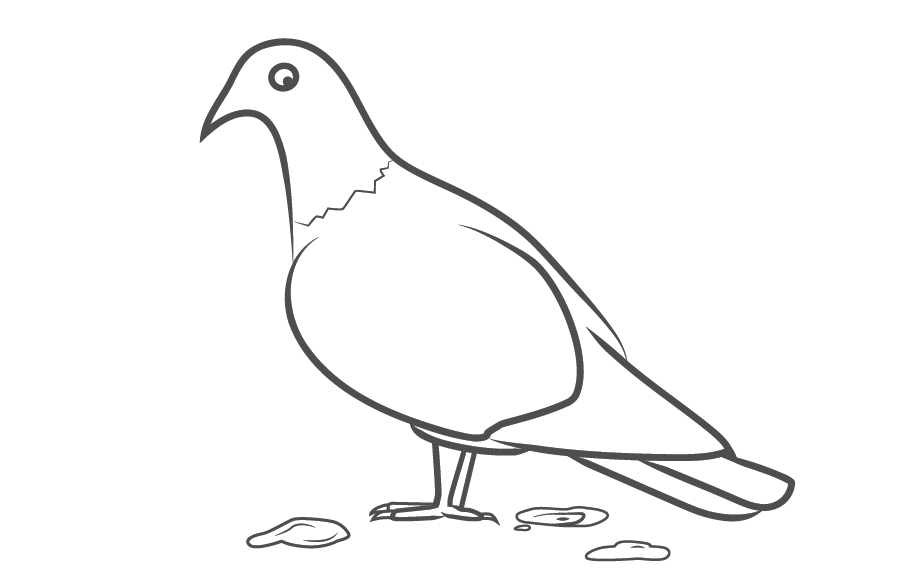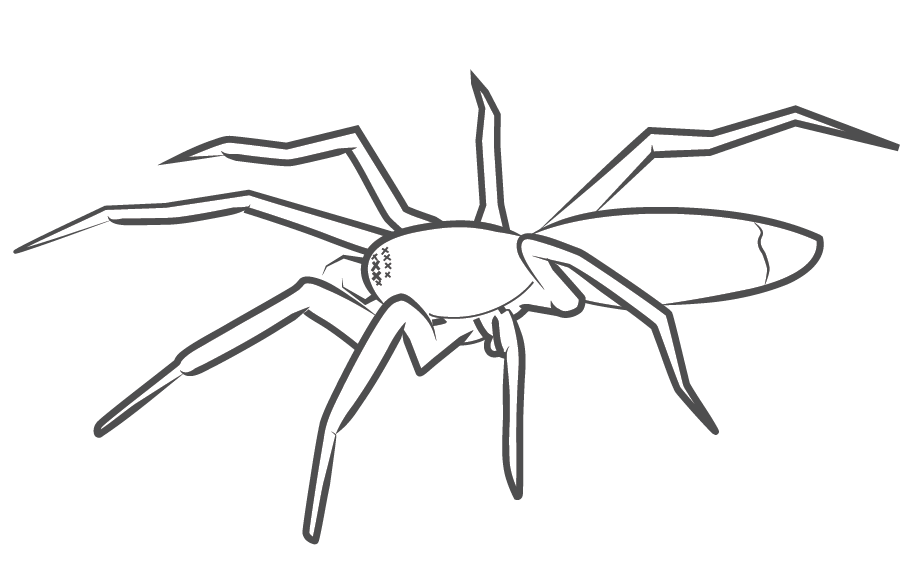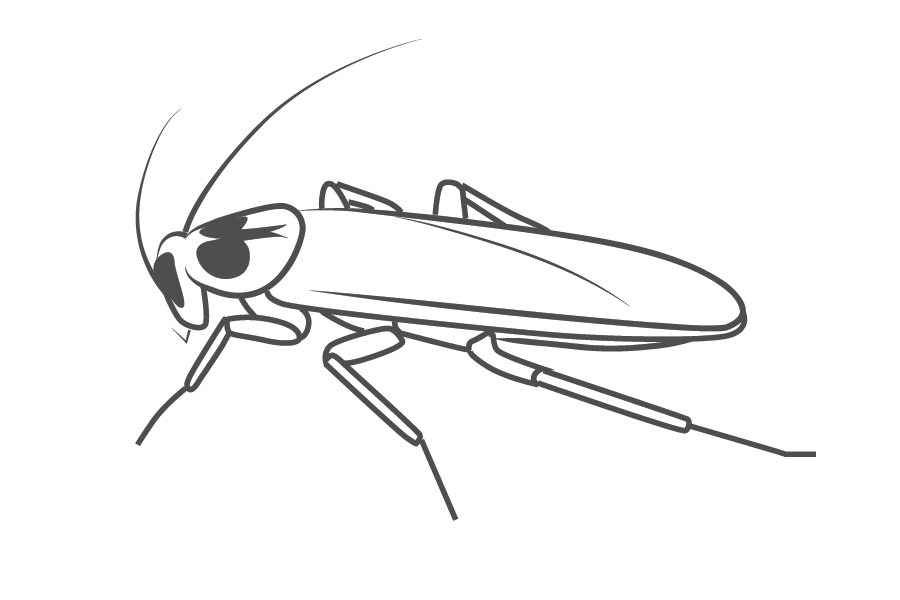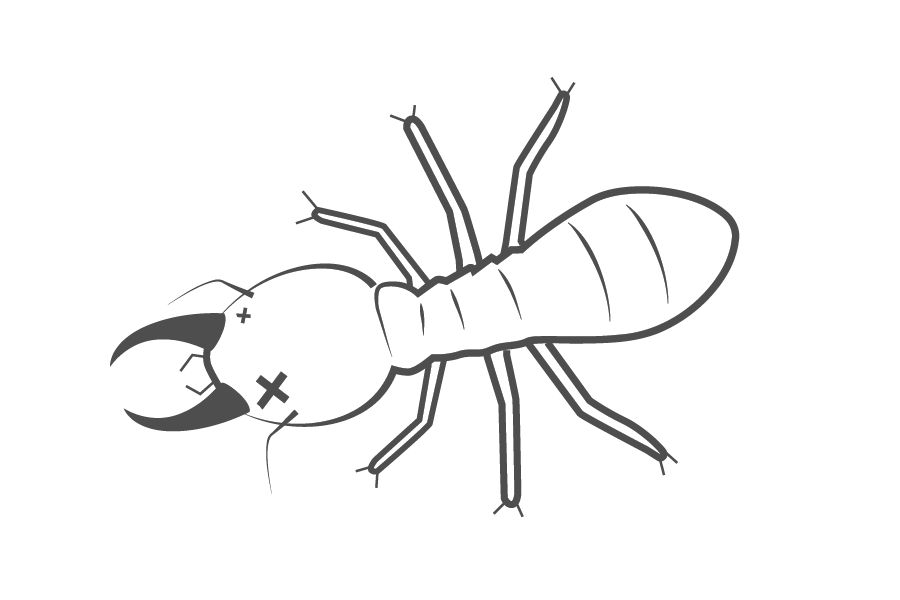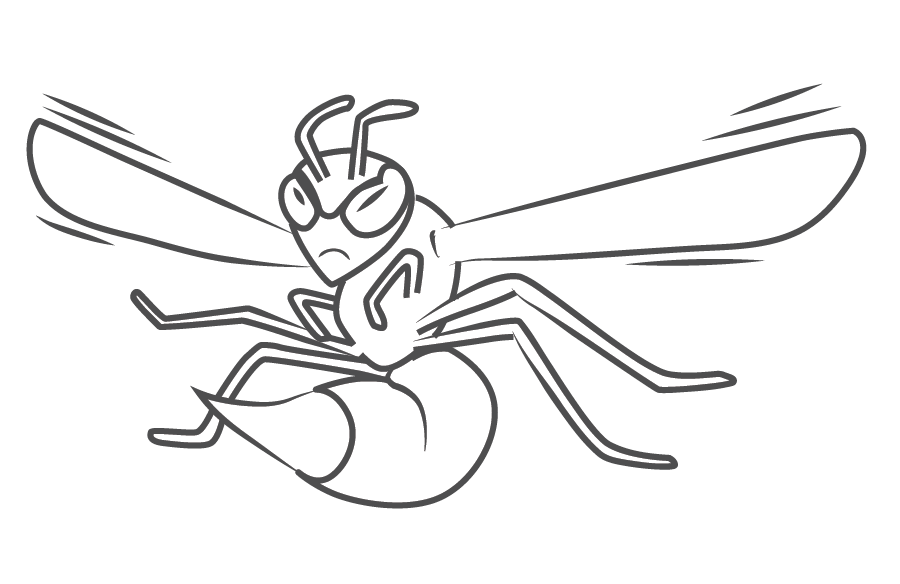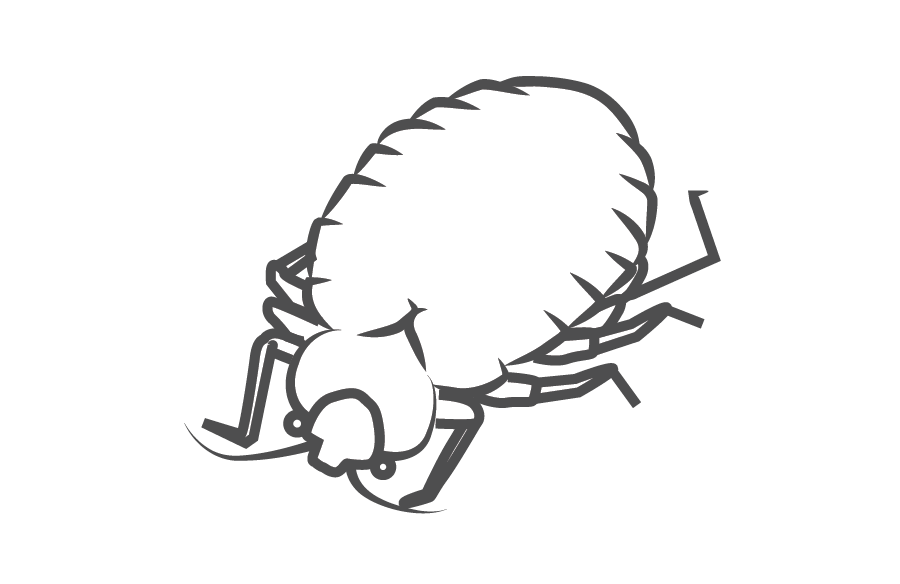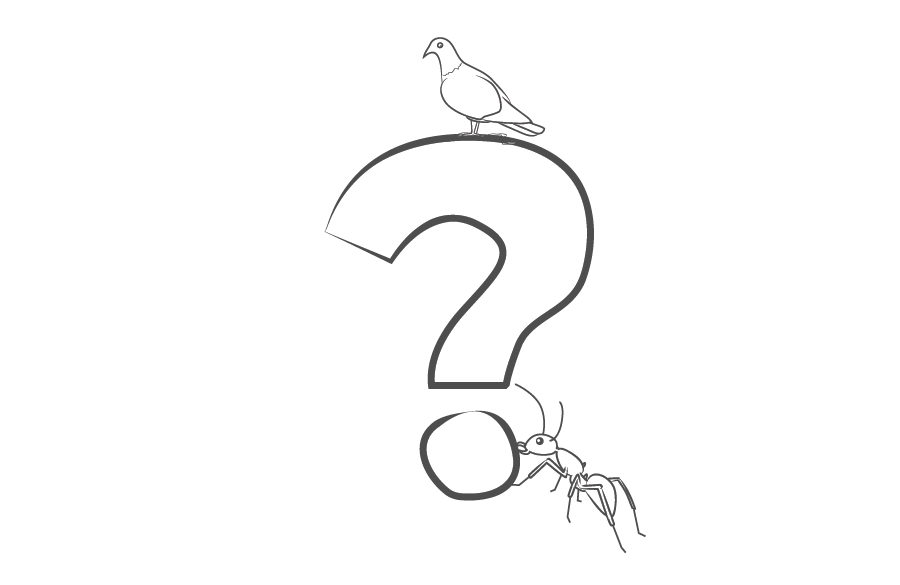
Pest Control That Won't Cost The Earth
Pest Control That Won't Cost The Earth


Pest Control That Won't Cost The Earth
Pest Control That Won't Cost The Earth

Our Mission
At EcoPest Group, our mission is to deliver safe and effective pest control solutions that won’t cost the earth. We are committed to protecting Adelaide’s homes, businesses, and communities against invasive pest species through eco-friendly practices while reducing chemicals in the environment with a targeted approach. By combining over three decades of expertise with innovation, we provide safe, affordable, and reliable pest control that supports a healthier planet for future generations.
Contact us for a free pest control quote today.
SA Licensed and Insured
EcoPest Group is licensed by the SA state health department, all our staff are trained to the highest standards and experts in all aspects of commercial & household pest control in South Australia. We are a fully insured company.
Eco Friendly Chemistry
Our unique Polymer Enhanced Synthetic Pyrethroid formulations are approved by the APVMA, weather resistant, Eco friendly, safe for you your family, pets and the environment.
It's Fixed or It's Free!
All our services are 100% guaranteed, if we cannot get rid of your pest problem the service is free. With hundreds of 5 star Google reviews you can be assured we have you covered.
Convenience
- Book 100% Online.
- Expert advice & bookings on 139 007
- Appointments 6am – 6pm
- 15-minute call back if enquiring online
- digital service reports with photo evidence.
- Credit card payment options in all service vehicles.
100% South Australian Owned and Operated
EcoPest Group is 100% South Australian owned and operated by South Australian Pest Control Experts.
Proudly Trusted By & Servicing












What Our Clients Say About Us
 EcoPest Group
EcoPest Group
24 Hindmarsh Ave, Welland
4.9 394 reviews
-
Colin Burford ★★★★★ a week ago
Thank you for attending to our problem today. The service was great and we are very pleased . If the smoke bomb doesn’t kill the moths it is certainly doing a great job on us. I would recommend the company willingly to others. Thankyou … More Lorraine and Colin Burford -
Kim Scott ★★★★★ 2 weeks ago
EcoPest came to our house to help re-locate several possums in our roof space. They were very efficient and sealed off the entry and exit points and setup cages and cameras. All staff were very professional and clearly are animal lovers … More first and foremost. We were very pleased with their service and would use them again. -
Ilze Frank ★★★★★ a month ago
Highly recommend this group! Excellent service from my first phone call.
Corey turned up on time, extremely friendly and professional - verified the problem , showed me images , reassured me of eco friendly treatment and efficiently set … More the baits for the honey ants breeding in roof cavity.
Two additional baits were provided if pesky ants raised their head elsewhere.
Initial quote for work was honoured and no “add ons” suggested as unfortunately happens with many companies dealing with seniors. Cheers, Ilze -
Kimberley Dunn ★★★★★ a month ago
⭐️⭐️⭐️⭐️⭐️
From the very first enquiry, the customer service from Eco Pest Group was excellent. They responded promptly, were flexible with appointment dates, and kept me well-informed with clear communication throughout — even confirming … More the appointment on the day with a message letting me know the technician was on their way.
The gentleman who came to do the job was welcoming, friendly, and very helpful. I really appreciated how understanding and accommodating both staff members were when I had to cancel the indoor spray last-minute, due to issues out of my control.
I’ll definitely be a returning customer next year and won’t hesitate to recommend Eco Pest Group to anyone looking for a reliable and high-quality pest control service. -
Janette Wheeler ★★★★★ a month ago
Eco Pest were recommended to me by a friend. To find a business that puts customer service as a high priority is well worth a review. Thanks to Ryan today who is a huge asset to Eco Pest. He was extremely professional and so easy to … More communicate with as with Eco Pest in general. He answered all my queries not just on termites and was very knowledgeable without rushing me through any of my queries. A very professional company. Thank you Eco Pest. -
Doug Gordon ★★★★★ 2 months ago
Justin & Michael were great to work with & communication was excellent, keeping us up-to-date with all aspects of our pidgeon eradiction process.Michael did a great job on the roof, with the clearing-out of a significant volume … More of debris from under our solar panels. As a result, there are some VERY confused pidgeons hanging about wondering what has happened! There is no way they have been able to penetrate the new mesh-barriers.Everything was pressure-washed & cleaned. As a bonus, Michael washed and scrubbed the solar-panels which will greatly improve their efficiency.We are very pleased that we chose such a good team, with the knowledge & experience to provide us with a first-class service. -
Rhys Dix ★★★★★ 2 months ago
Quick and easy serviceCouldn’t fault it -
jodie main ★★★★★ 2 months ago
Pest aid went above and beyond to tend to my needs urgently, I highly recommend these guys. Friendly helpful staff and affordable prices. -
Rino C ★★★★★ 2 months ago
Work was done in a friendly and efficient manner. More than satisfied with the quality of service and cost. -
Catherine Downer ★★★★★ 2 months ago
I was very happy with Pest Aids response, service and price to remove a European wasp nest. I would certainly use the company again. -
Ash Dumont ★★★★★ 2 months ago
Next day service, prompt and on time, excellent communication, very thorough and well priced. Could not be happier with Pest Aid! -
Clinton ★★★★★ 2 months ago
Very good. Punctual, and took the time to explain things really clearly. Wasn't pushy about selling products and services. -
Kathy Behrendt ★★★★★ 2 months ago
Michael was super friendly & easy to chat to. The whole job took very little time & disruption to my day. Thanks Michael. -
Nuwan Dissanayake ★★★★★ 2 months ago
excellent service provider with broad Knowledge of the industry,did a great job at my private property. -
Sumit Pareek ★★★★★ 2 months ago
Your product is very good -
Suraj Jacob ★★★★★ 2 months ago
Taran was professional, knowledgeable and provided excellent service. Highly recommended! -
Simon Armitage ★★★★★ 2 months ago
Punctual. Friendly. helpful. And for a good price. Thanks -
Simon Goodwin ★★★★★ 2 months ago
Excellent professional and courteous service from Ryan. Highly recommended. Thank you. -
graham maddison ★★★★★ 2 months ago
My wife and I have been pleased with the service received from Pest Aid. We would be only too happy to refer this business to potential household customers looking to rid their homes of creepy crawlees pests.Graham Maddison at the Reserve … More lifestyle village in Woodcroft. -
Serena H ★★★★★ 2 months ago
Very friendly and extremely thorough check. -
john gilligan ★★★★★ 2 months ago
Maintained good communication and arrived promptly as arranged.Not 100% sure of product used but bees are no longer a problem. Good job. -
robert durant ★★★★★ 2 months ago
Service was prompt and I was kept up to date when exterminator would arrive. Work was carried out to my satisfaction. -
Elisha Preece ★★★★★ 2 months ago
We had Mark come to our house yesterday to perform a termite inspection after we disturbed some termites recently in a tree we had removed. Mark is a true asset to PestAid, he is honest, thorough and professional. There was no pushy sales … More tactics just a genuine honest service which made us feel really at ease. A+ service from both Mark and the lady who booked in our appointment. Well priced too. -
Richard Bartlett ★★★★★ 2 months ago
Josh and Justin were amazing to deal with—professional, friendly, and thorough. They addressed our pest concerns with great expertise and care, making the entire process stress-free. We are confident in their service and will definitely … More be using Pest Aid for all our pest-related issues moving forward. Highly recommended! -
Kevin B ★★★★★ 2 months ago
Staff are very thorough with pest examination -
Steve ★★★★★ 2 months ago
They were punctual, polite, efficient and thorough. We would recommend them. -
Melisa Gocaj ★★★★★ 2 months ago
Did pre-construction treatment with Pest Aid. The process went smoothly, given slab timelines change often it was handy to know that they only need 2 days notice. Quote was also very reasonable, I wouldn’t trust anyone cheaper. -
D.K. Benson-Smith ★★★★★ 2 months ago
Professional service!When follow ups for possum control were required, I had Mike, Ryan & Josh return to my home. All three were friendly, knowledgeable and able to articulate all procedures, rules & requirements. They were never … More late and each of them gave service with a smile, understanding my stress & frustration. I would definitely recommend Pest Aid.Many thanks,Darla -
Cordelia Connors ★★★★★ 2 months ago
The man who came out here on Thursday to get rid of my European wasps, he was great and did his job really well. He also didn't mind waiting for my friend to arrive as they were at the end of my street and for us to go inside. When … More he told me what to do to the area after he didn't mind going back over it a second time before he left just to make sure I remembered what he told me. If you've got a dog like I do or other pets that go outside then more than happy to let you know how long to keep them inside once they've treated the nest to kill the European was and to make sure your pet is inside so they can't get sick from the fumes while treating the European wasp nest. Big thank you from me and my dog. 😊🐕🦺 -
Tony H ★★★★★ 2 months ago
Mark was brilliant, sent ETA SMS tracking to my mobile for his arrival. Also educated me as to Europian wasp erradication and got the job done. Highly Recommended AAA+++ -
paula antoniou ★★★★★ 2 months ago
Michael was friendly and customer service focused, would recommend pest aid for internal and external pest controlI am waiting on a quote to remove birds nesting in my corrugated iron roof, thank you very much for your service 😀 -
Elizabeth Robinson ★★★★★ 2 months ago
Michael arrived spot on time. He was very pleasant and cheerful as he went about his business. He was very thorough all around the house and garden. Thank you Michael. -
Pauline Adams ★★★★★ 2 months ago
Josh was excellent. Very thorough. Very informative. Would thoroughly recommend Pest Aid. -
Leah Bills ★★★★★ 2 months ago
Very professional and knowledgeable. -
Ting Zhong ★★★★★ 2 months ago
Good service and professional staff. -
Hayden Eberle ★★★★★ 3 months ago
Great service. -
kiwi 1960 ★★★★★ 3 months ago
Great service friendly staff and explained all procedures and explained what he did and why and what we could do very happy with him and the job done ✔️ -
Chris Dunn ★★★★★ 3 months ago
fast on time & polite operator, I'll use pest aid again if I need them -
Leoni Wight ★★★★★ 3 months ago
I had PestAid in today because of a rat issue in my roof. The gentleman who came out was extremely polite and very friendly. He even changed a light bulb in the passage for me. Gave me hints on how to try stop rats from gaining access to … More roof. Great friendly service from them contacting me to him coming out. Kept me informed as to time he would be arriving as well. Thank you very much. -
吕达仁 ★★★★★ 3 months ago
After moving services from another well-known pest control company, we have found Pest Aid to provide a more thorough and prompt service from friendly technicians. A detailed report and follow up was provided after the initial call-out. … More -
Penny Fyfe ★★★★★ 3 months ago
Taran from Pest Aid conducted a termite inspection at my residence. Taran was extremely polite, understanding and thorough. He explained every step of the inspection and communicated any concerns or issues. The level of communication and … More customer service was outstanding. I would highly recommended Pest Aid to anyone. -
stacey sims ★★★★★ 3 months ago
Definitely recommend this company!!! Amazing job! -
Mandana Shojaeinejad ★★★★★ 2 months ago
Corey did an excellent job with our pest control service. He was very thorough and accurate, explaining everything clearly and in detail. He carefully inspected every area, ensuring nothing was missed. On top of his professionalism, he … More was friendly and had a great, positive vibe. Highly recommended! -
Glenys Claverie ★★★★★ 3 months ago
Great communication from start to end of job, punctual and polite. Process well explained throughout and so far really happy. Would recommend. -
Geoff Staker ★★★★★ 3 months ago
Excellent service and very friendly, Josh did his job very very well, my recommendation for this company -
Lauren Taylor ★★★★★ 3 months ago
We’ve used other pest control companies in the past but I hadn’t settled on one I liked - until today!! Taran was beyond excellent. Super thorough, informative and respectful. Actually took the time to do a walk through of the house, I … More explained the problem areas, did the treatment as requested of course but also passed on some helpful tips for future proofing!Amazing customer service, and actually cost less than what we’ve paid in the past with other companies.Highly recommend! -
N O ★★★★★ 3 months ago
Fantastic...... Highly recommended. -
Wendy Whitelaw ★★★★★ 3 months ago
Couldn't speak more highly of the service provided by Josh from Pest Aid. He was prompt, polite and had the problem nest removed quickly. -
Vicki Lees ★★★★★ 3 months ago
Very professional and quick service as well. Patrick a nice guy as well -
Tina Southall ★★★★★ 3 months ago
Thank you so much for attending to the removable of the wasp nest. From the politeness of the initial phone call to the polite and friendly person who attended the wasp nest removal. This was attended to within the hour. -
Quinton-Sarah Hughes ★★★★★ 3 months ago
Great service, Great communication, Great price, made pest control on our new extension seamless. Thanks Gavin and team at Pest Aid. -
michelle ★★★★★ 3 months ago
Thanks for the prompt reply and arriving the same day. Excellent customer service and a job well done. 😊 -
David Lightbody ★★★★★ 3 months ago
Wonderful service and workmanship. -
Dana G ★★★★★ 3 months ago
Had a bee swarm in my inaccessible chimney for the first time this year. Pest Aid were contracted by my local council (PAE) to solve the issue. Communication was easy, regular and issue was fixed with no problems. Thanks. -
Kat Kenyon ★★★★★ 3 months ago
Very happy with the service provided by Pest Aid. They were able to attend my property within one hour of the initial call, and were thorough in treating the issue. A full service report was emailed to me on the spot for my records. I wouldn’t … More hesitate to recommend to others! -
Richard Evans ★★★★★ 3 months ago
Very happy with the service Pest Aid provide and their operations come across as well structured and organised with a good use of technology to assist as all businesses need to do these days.
I would recommend them..👍
Have attached a photo … More of one of the little critters with its Baby attached… Very cute.. but made it very clear to it that it won’t be coming back..🤣 -
Ian Davidson ★★★★★ 3 months ago
Michael is a skilled and highly experienced professional whose approach to managing problem possums inspires confidence. -
Morgan Phillips ★★★★★ 3 months ago
Professional, punctual and so organised for our commercial premises. It’s one less thing we have to worry about. -
Graham Alexander ★★★★★ 3 months ago
Very friendly quick and efficient. Great service and even went the extra mile to point out another issue. Would recommend -
Ray Smith ★★★★★ 3 months ago
Fast, friendly and extraordinarily knowledgeable.The inspector was calm and reassuring, and explained the situation and ongoing treatment very clearly.I couldn't be happier. -
Michael Sweatman ★★★★★ 3 months ago
Excellent service and communication . Will be using again -
Sebastian Raneskold ★★★★★ 3 months ago
I was very happy with the way I was able to work through a possum solution with both Michael and Gavin from Pest Aid, ensuring that the outdoor area that needed to be secured was not adversely affected. With the help of a carpenter, I now … More hope that there will be no more possums getting into the roof cavities! -
Maurice Bunworth ★★★★★ 3 months ago
Absolutely Fantastic very thorough and very professional great job thanks guys.. Highly recommended..☺ -
Chun Yu Lee ★★★★☆ 3 months ago
Fast and quick response, did an excellent job -
Julie-Ann Townley-Rivett ★★★★★ 3 months ago
Had bees enter external walls very prompt and efficient service without killing them and everything else also cleared the wasp nests whilst there as a bonus just wonderful service -
Lillian Camphausen ★★★★★ 3 months ago
Lucas came within an hour of my spotting the bee swarm and my requesting Pest Aid to send someone. He was friendly, worked efficiently and answered all my questions. Will recommend further. -
Steve Bruland ★★★★★ 4 months ago
The Pest Aid technician was extremely knowledgeable about possum control, was a pleasure to work with and did excellent quality work. -
Jo Jo H ★★★★★ 4 months ago
Im very happy with Pest Aid 'I had Ryan came to take care of my possum problem & he was a nice polite young man 'who did a very thorough job of blocking up several holes on my roof . Very very Happy with my service & with … More Ryan for solving the possum problem so very big ty to Pest Aid & Ryan . So do yourself a favour if you have problems with Rodents possums ring Pest Aid. Ty guys 🥰 very happy 😊 -
Alec ★★★★★ 4 months ago
I've had issues with pigeons for a long time, working from home it was particularly annoying. They'd been running up and down the gutter, I can't exaggerate how loud they were. I booked in with Pest Aid after having another … More group previously come out and install netting / spikes.I had additional netting installed to block them off from the gutter and zaptrack wire installed around the perimeter of the roof, as per their recommendations.I haven't had any pigeons anywhere near my roof ever since. Pricing is competitive, pay for what you get. I wish I'd gone with them first.Update: Had them come out for a maintenance check, solid service. -
Sue Bromley ★★★★★ 4 months ago
Pest Aid were excellent. They were honest and fixed my rats in the roof problem efficiently and for a great price. -
Helen Hood ★★★★★ 4 months ago
Pestaid were fabulous! Impressed by their rapid response within half an hour to my late afternoon report to PAE Council about a beehive in my chimney. A very polite and efficient young man came early the next morning, carefully explained … More what he was going to do to exterminate the bees (sadly); they had actually eaten a hole in the brickwork to gain access into the chimney!The whole operation was carried quickly, cleanly, with no fuss leaving me pleased and very relieved. Thank you Pestaid! -
Margaret Rollo ★★★★★ 4 months ago
Outstanding service and attended to our possums party in our roof cavity very quickly. I would absolutely recommend Pest Aid. -
Gary Hansford ★★★★★ 4 months ago
Absolutely outstanding service. We had wasps entering the subfloor through an exterior vent of our 100+ year old stone house, and we could hear them swarming inside. I called Pest Aid in Adelaide at 8:15am on Monday morning and was advised … More that a technician would visit within the hour. Less than 1 hour later Mark attended and treated the area with an insecticide dust because the nest was inaccessible. He was polite, knowledgeable and efficient in his work. The fee for his service was also very reasonable.Should I need them again, I will not hesitate to use Pest Aid in Adelaide. Thank you, Mark.Since my previous review (Google won't allow me to add a new one), I discovered a termite infestation behind a shed at the rear of the property. I submitted a request online and Michael visited today. He performed a thorough inspection of the property including inside the shed, inside all the rooms of the house, and the ceiling space. He was very personable, knowledgeable and thorough in his work. He produced a report with photos before he left and also gave me a quote for the installation of a termite baiting and monitoring system.I am super impressed with the service he, and Pest Aid provided. Thanks very much, Michael. -
summan chand ★★★★★ 4 months ago
We had the pigeons under the solar panels in our house. I had quotes from few companies pest Aid was the cheapest and most affordable to us.Michael was the technician, really friendly, an amazing and very experienced man. His work is super … More inspiring, he removed all the nests, and other rubbish those nasty birds had made.It’s double story house, Michael had no problems going up there and performing this task so efficientlyMichael went out of his way in cleaning and collecting all the rubbish that fell off the roof.I really recommend Pest Aid for their super efficient work and reliable services.SummanParalowie S.A. -
Maud Gill ★★★★★ 4 months ago
We had a fab experience with a friendly, professional and knowledgeable team member. He was able to share information and explain all aspects of the job, giving us confidence in the treatments. -
Kathryn Adams ★★★★★ 4 months ago
Pest Aid rep was on time & texted first when exactly he was arriving at my home. Very knowledgeable about rat infestations and friendly. Quick worker. Cheaper quote than others I rung AND they will accept cash too, which other companies … More refuse to do. Josh recommended the less toxic green baits as I had a German Shephard pedigree show puppy playing in same area. I didn't realise they do termite traps as well at cheapest price. All in all a no fuss , positive experience. ✨️ -
Ayda Mildwaters ★★★★★ 4 months ago
Our business highly recommend this company, we use Pest Aid for all our pest control services and investigations at many of the investment properties that our agency manages.- Communication is always great, they always inform you of any … More follow up work required and they send you inspection reminders- Bookings are extremely easy and are queries are addressed super efficiently- The work is always attended to within a short time frame and the invoice/quote for works comes through promptly- We have had good feedback from all our clients -
Sanaz Lehman ★★★★★ 4 months ago
Fast, professional and effective response -
Chris Altmann ★★★★★ 4 months ago
On time, professional and friendly. Very happy with the job. -
Sharon Brady ★★★★★ 4 months ago
Service from Josh was excellent. Message received to say he would be arriving within 10 minutes. Josh explained that due to the drizzly rain that day I would need covered if I needed to contact to advise bugs were still around. -
Sandra Walker ★★★★★ 4 months ago
Great service. Taran was here on time and described exactly what he had to do to get rid of European wasp nest. I would have this company back any time I get a pest problem. -
karen lunnay ★★★★★ 4 months ago
I had a lovely man from this company come out to control a rat problem. He was incredibly polite, informative, respectful, cheerful etc. I can't speak for the whole company as I've obit dealt with the one person so i can only … More review my experience with him but if the other employees/ contractors are antecedents near as helpful and professional as he was then i couldn't recommend them highly enough. He was a pleasure to do business with. I just wish i could remember his name. But if you're looking for a pest control company, go with this one. 100% satisfaction -
Ian Marshall ★★★★★ 4 months ago
Great work from the boys at Pest Aid. Direct, helpful and informative communication, arrived when they said they would, work carried out professionally while considerate of our requirements (shoes off please).Corey was friendly and professional. … More Fully recommended A++. -
Jenny M ★★★★★ 4 months ago
Justin was very informative and helpful when I called. Josh texted me to say he was on his way, he was thoroughly professional and friendly. Thanks for a job well done. -
Rachel Hatch ★★★★★ 4 months ago
Patrick from Pest Aid did our pest spray for both internal and external and was so lovely, informative and did a great job! -
Linda Mawby ★★★★★ 4 months ago
Young man was very friendly and explained everything to me in detail about treatment to my property. Would recommend to friends and family. -
Marie Quek ★★★★★ 4 months ago
Excellent service. Taran was extremely helpful in addressing my concerns and was very thorough with the treatment both inside and outside. I was very impressed that the spray could reach the second storey eaves with ease when previous pest … More management companies could not. -
Kathrin Mach ★★★★★ 4 months ago
I don't usually leave reviews but Taran from Pest Aid did a really thorough inspection and sharing much knowledge on prevention of any problems. He was very willing to answer questions and showed interest in wanting to do a good job … More as opposed to another company I used in the past. Pest Aid was recommended to me by someone and they didn't disappoint. Fairer price too. Thank you. -
Jillian Jeffs ★★★★★ 4 months ago
Arrived exactly on time, very pleasant pair of men and very efficient with their work. They supplied photos of their work as it was Pigeon Proofing on double storey roof so obviously I was unable to see their work without the photos. Very … More happy and would not hesitate in engaging Pest Aid with any future work if necessary 😊 -
Malcolm Jenkins ★★★★★ 4 months ago
Patrick arrived to deal with a Eurpean Wadp nest. He was thorough with information and provided a swift service -
Angela Swan ★★★★★ 4 months ago
Friendly helpful service, answered all my questions and were thorough in their inspection -
Steve Germain ★★★★★ 4 months ago
Excellent service and great helpful information and tips -
Stefan & Silvija Baalcke ★★★★★ 4 months ago
Easy to deal with. Fast response. Flexible and professional. -
Chris Koufalas ★★★★★ 4 months ago
Micheal did a great job with the inspection for termites. The termite problem is serious so pest aid will come back to remove them. -
Rob Phillips ★★★★★ 4 months ago
Have had Pestaid out a few times now, initially for rodent issues and now just preventative maintenance. Each time the service technician has been on time, friendly and completed their work in a very professional manner. Highly recommend. … More -
Adrian Graves ★★★★★ 4 months ago
I strongly recommend Pest Aid, for removing them, and making my home possum proof. One of the smaller Adelaide pest control companies, they were immediately helpful in scheduling an inspection and quote, and then following up with the necessary … More work. Possum entrances were expertly blocked with high quality materials and elegantly and the ‘guests’ humanely trapped and relocated. The team communicates extremely well, is highly professional in their work, and pleasingly customer friendly. Worth everyone of five Stars! -
潘晓良 ★★★★★ 6 months ago
Professional service, they are experts of possum and they have good tools to mask the holes and to capture them. They caught two possums in my roof. Mark and Corey are very nice and patient.👍 I would strongly recommend their service.




